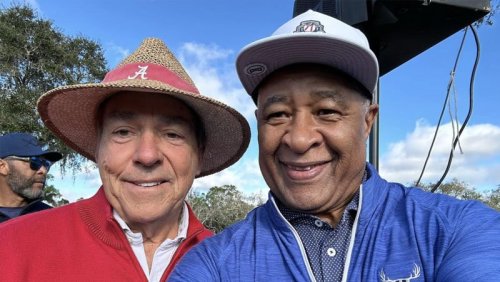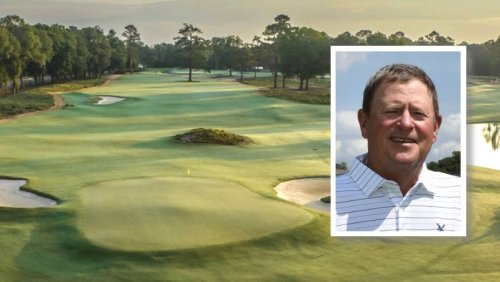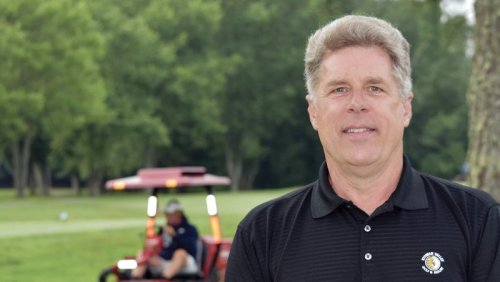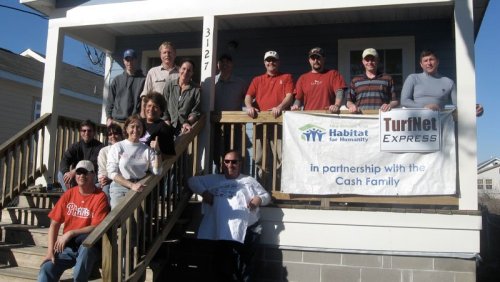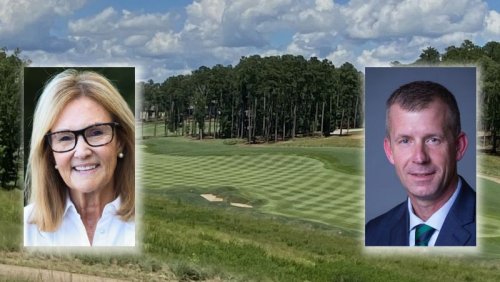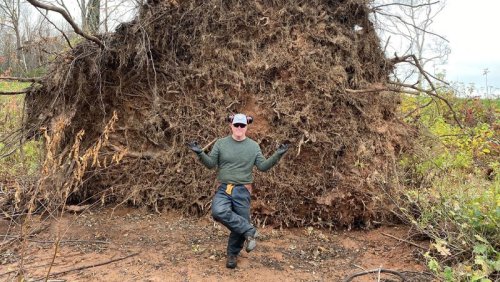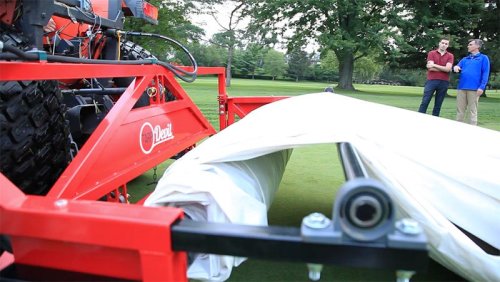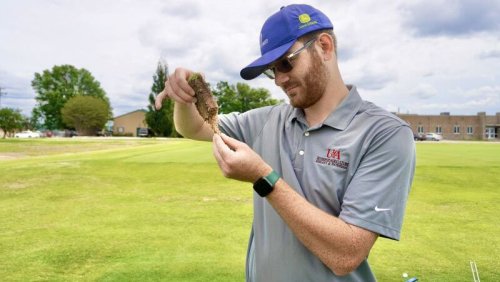
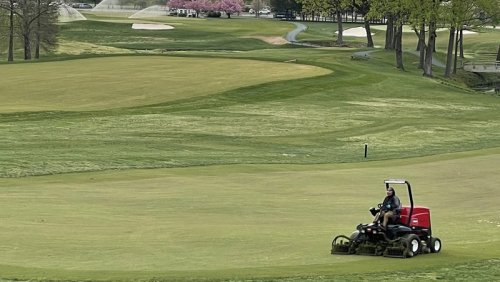
Similarly, the golf course at the U.S. Naval Academy is a pioneer in its world.
Five years ago, the Naval Academy course was among the first to grass with Tahoma 31 Bermudagrass. Developed by turfgrass breeders at Oklahoma State University, it boasted traits such as improved tolerance for cold, wear, drought and disease, attributes that have made it popular even in transition zone areas like the coastal Mid-Atlantic. Since regrassing with Tahoma after a recent renovation, the grass has provided a 12-month playing surface while making the threat of winterkill nearly a thing of the past.
Tahoma 31 was still known under its NTEP name of OKC 1131 in 2019 when superintendent Eric David first bought a truckload of sod from Riverside Turf in Charles City, Virginia. The goal was to determine if it could be incorporated into a renovation that was just getting started at the course in Annapolis, Maryland.
Tahoma 31 fairways provide a 12-month playing surface at the golf course at the U.S. Naval Academy in Annapolis, Maryland. "I wanted to test it out, so we tested 9,000 square feet all over the place," he said. "I put it in high-traffic areas, shaded areas. I put it on tees. I did a split tee with half Tahoma and half of another Bermuda to see how they looked in the same environment. We did it that summer and through the winter and decided that's what we were going to go with in 2020. I've had Tahoma longer in Maryland on a golf course than anyone."
Today, David is managing 30 acres of Tahoma on tees, fairways and the practice range, areas where he previously was growing mostly common Bermudagrass. It also is in all approaches that run up to a series of annual bluegrass collars that surround the course's 007 creeping bentgrass greens.
He also is managing Tahoma on a three-quarter-acre nursery as well as some of the Navy's athletic fields.
Since that renovation four years ago, Tahoma 31 has popped up at about a half-dozen golf courses throughout Maryland, including Columbia Country Club in Chevy Chase which incorporated it into a renovation last year.
"I love it," David said. "It's now the standard grass around here for anybody doing Bermuda. It's pretty much just Tahoma for our region.
"When we did the renovation of the golf course, I bought the sod in November. It was dormant when we laid it, and it was fine. That grass is still there today."
Tahoma 31 was installed at the golf course at the U.S. Naval Academy during a recent renovation. The NFL's Philadelphia Eagles and Baltimore Ravens also are playing on Tahoma.
"The sports turf guys were on it earlier than the golf guys because of its tensile strength and tear resistance," David said. "You just can't tear this stuff."
With average daily high temperatures in the 40s even throughout the winter in Annapolis, golf courses in coastal Maryland can get consistent play year-round, and common Bermuda was not up to the task.
"The common Bermuda would already be brown at this point and start to recede to the point that you'd have to overseed," David said.
"With Tahoma we have really good conditions starting in April and have pretty good conditions all the way through winter. It is absolutely playable through the winter. In fact, I'd say some of the guys (who play here) really like it better in winter because it's not growing as much, and you can hit the ball farther. It's a faster playing surface. The seniors who play all winter long, they love it."
A 2007 Michigan State graduate who prepped for 10 years at Baltimore Country Club before being named superintendent at the Naval Academy course seven years ago, David said the playing conditions on the common Bermuda were not optimal until July. Conversely, the Tahoma greens up in Annapolis in April and retains its color until late November or even into early December.
"We have three, three-and-a-half, at most four months of brown," he said. "Even in dormancy it performs well. That was the key. You don't have to overseed into it, and still can maintain a dense enough surface that you could play off it.
Mowers go out shortly after spring green up occurs in April at the Naval Academy Golf Course. "In April after it starts to green up, we'll wait a week or two then mow to clean up some of the tissue on top. Then we'll be mowing once every two weeks in May. In June we're mowing weekly or bi-weekly, then by the end of June we're mowing at least two days a week depending on (plant growth) regulators."
David said the density of the turf canopy is more reminiscent of a creeping bentgrass than an ultradwarf Bermuda that golfers would be accustomed to seeing in Florida or other parts of the South.
Winterkill issues have been almost non-existent, except for one freeze in the winter of 2022-23 that David described as a "freak" flash freeze event that lasted less than a day.
"Wherever there was moisture, the grass died. By the second day it was back up to 40 degrees," he said. "The only places (where grass) died was where there was field capacity moisture. It didn't have time to freeze the soil. It was just one of those things. What are you going to do? Otherwise, we've had zero turf loss."
Tahoma 31 was developed by Oklahoma State University turfgrass breeder Yanqi Wu, Ph.D., from parents taken from cold, arid parts of China and South Africa.
"Golfers love it because it's a hard playing surface," David said. "We like it for drought resistance, cart traffic (resistance), color and length of time we can keep it green."
- Read more...
- 2,170 views

